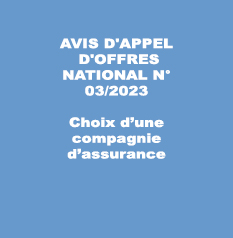| Programme annuel & rapport de suivi technique |
-

Rapport d'activités 2023
-

Programmes Techniques 2024
|
| Géocatalogue |

|
| Appels d'Offres |
-

ACQUISITION DES TICKETS RESTAURANT POUR LE PERSONNEL DE L’ONM
-

CHOIX D’UNE COMPAGNIE D’ASSURANCE
-

ACQUISITION ET MISE EN ŒUVRE D’UN PROGICIEL DE GESTION INTEGRE
|
|
Investir en Tunisie |


|
|
|
|
|
::
Documentation and Editions
>>
Research library
|
| |
|
[
Search by author
]
[
Search keyword
]
[
Search by index
]
[
Search by category
]
|
title of the reference :
|
A new genus of macroscelidea (Mammalia) from the Eocene of Algeria
|
|
Publication Date:
|
2001
|
|
Author :
|
Tabuce Rodolphe, Coiffait Brigitte, Coiffait Philippe Emmanuel, Mahboubi M., Jaeger Jean-Jacques
|
|
Catalogue type :
|
Livre
|
|
Catalogue reference :
|
V.21, N°3 J. of. Vert. Paleontol. V.21, N°3 A new genus of macroscelidea (Mammalia) from the Eocene of Algeria A possible origin for Elephant-Shrews. "Late Eocene of Bir El Ater (Algeria) is described and assigned to the subfamily Herodotiinae (Macroscelidea). This genus and the other primitive elephant-shrews are compared with Louisininae (Hyopsodontidae, Condylartha) from the early Paleogene of Europe.These groups have been included in a phylogenetic analysis based on dental characters, in order to clarify the origin of Macroscelidea. Phylogenitic reconstruction, suggests that Louisininae are belonging in the polyphyletic Hypsodontidae except for Microhyus which is considered here as the sister-group the Macroscelidae.These results suggest a terrestrial interchange between Africa and Eurasia during the Early Eocene. The phylogenetic analysis suggests also that the Macroscelidae-Microhyus clade is closely related to the Proboscidea. Like molecular phylogenies, especially those concerning the African molecular clade (= Afrotheria), our results, provide evidence for a macroscelid-tethytherian relationship. However, if the Macroscelidae emerged from European ""condylarth"" at the Early Eocene as our data suggest, the Proboscidea are already differentiated in Africa during this period.Then, it seems that Macroscelidia and Proboscidea are paraphyletic. The assumption of a unique group of condylarthran type at the origin of Afrotheria cannot be excluded, but the current paleontological data do not fit with that hypothesis ." annexes mammalia:Eocène ; chambius:Nementchatherium ; Algérie:Afrique du Nord ; Bir El Ater Mahboubi M. Jaeger Jean-Jacques Coiffait Brigitte Coiffait Philippe Emmanuel Tabuce Rodolphe paleontologie
|
|
Indexation decimale :
|
paleontologie
|
|
Keywords :
|
mammalia:Eocène ; chambius:Nementchatherium ; Algérie:Afrique du Nord ; Bir El Ater
|
|
Summary :
|
"Late Eocene of Bir El Ater (Algeria) is described and assigned to the subfamily Herodotiinae (Macroscelidea). This genus and the other primitive elephant-shrews are compared with Louisininae (Hyopsodontidae, Condylartha) from the early Paleogene of Europe.These groups have been included in a phylogenetic analysis based on dental characters, in order to clarify the origin of Macroscelidea. Phylogenitic reconstruction, suggests that Louisininae are belonging in the polyphyletic Hypsodontidae except for Microhyus which is considered here as the sister-group the Macroscelidae.These results suggest a terrestrial interchange between Africa and Eurasia during the Early Eocene. The phylogenetic analysis suggests also that the Macroscelidae-Microhyus clade is closely related to the Proboscidea. Like molecular phylogenies, especially those concerning the African molecular clade (= Afrotheria), our results, provide evidence for a macroscelid-tethytherian relationship. However, if the Macroscelidae emerged from European ""condylarth"" at the Early Eocene as our data suggest, the Proboscidea are already differentiated in Africa during this period.Then, it seems that Macroscelidia and Proboscidea are paraphyletic. The assumption of a unique group of condylarthran type at the origin of Afrotheria cannot be excluded, but the current paleontological data do not fit with that hypothesis ."
|
|
Exemplaries :
|
TU2119
|
|
|
|
|
|
|
|



